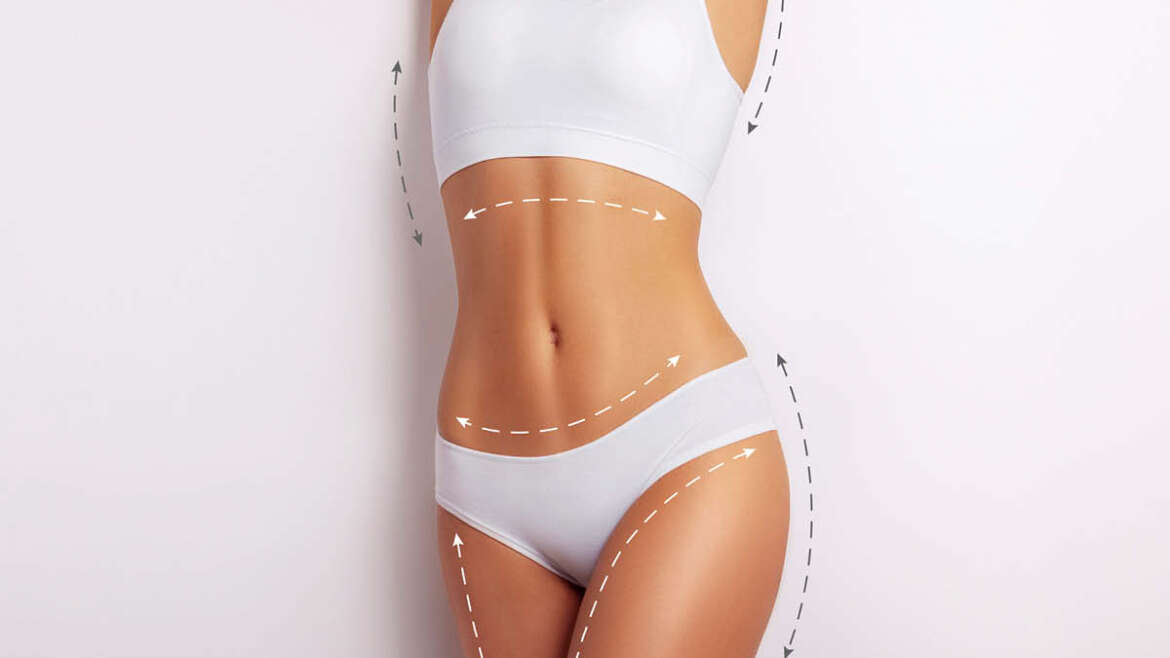Body Contouring
Body contouring refers to a group of popular cosmetic surgery procedures recommended after substantial weight loss. The goal of these procedures is to smooth, tighten, and reshape the body. You can learn more about body contouring procedures, benefits, recovery, and associated risks in this blog. If you’re interested in learning more or getting started with treatment, schedule a consultation visit with the team at Plastic & Reconstructive Surgery – a division of U.S. Dermatology Partners. Our skilled board-certified plastic surgeons will review your treatment options and help you find the ideal solution to meet your needs.
What Is Body Contouring?
Following dramatic weight loss, especially rapid changes, the body often has excess skin and fatty deposits that need to be removed to improve body shape. Additionally, loose underlying tissues and structures may need to be tightened. For these reasons, people may choose to work with a plastic surgeon to create a body contouring plan following substantial weight loss. While surgeons often refer to body contouring as its own procedure, it’s actually a term that describes a number of different cosmetic surgery solutions used to deliver an overall improvement in the shape and tone of the body after dramatic weight loss. Some procedures that may be used as part of a body contouring treatment plan include:
- Facelift – to remove and lift excess skin around the chin, jaw, and neck.
- Arm Lift – to remove sagging skin or fatty deposits left behind on the arms.
- Breast Lift, With or Without Implants – to restore a more lifted, rounded appearance to breasts.
- Tummy Tuck – to remove excess skin and fatty deposits around the stomach as well as smooth and tighten underlying muscles and tissues.
- Lower Body Lift – to smooth and reshape the abdomen, buttocks, and upper legs.
- Medial Thigh Lift – to remove excess skin and eliminate sagging of the inner thigh.
Benefits of Contouring Your Body
The benefits of body contouring are immediately apparent for those who choose to move forward with these procedures.
Some common benefits include:
- Smooth, tight, and defined body shape
- Appearing younger
- Improving confidence
- Alleviating adverse effects related to loose skin, including chafing, sores, and infection
What Does the Recovery Process Look Like?
Before beginning body contouring treatments, your plastic surgeon will walk you through the entire process and what to expect. Make sure to ask questions and take notes, so you feel confident that you’ll be able to follow your surgeon’s directions closely to ensure you heal quickly and comfortably.
While every treatment plan is different, most patients will experience the following during recovery after body contouring surgery:
- Surgical dressings are placed immediately following the procedure, and your surgeon will provide directions for changing these dressings and keeping wounds clean.
- In some cases, tubes are placed to drain fluids away from the surgical site. These will usually be removed within two weeks of treatment.
- Oral and or topical medications to prevent infection, relieve pain, and promote wound healing should be used as directed by your surgeon.
- You should get plenty of rest during healing. This may include instructions for when you should resume specific activities. For instance, if skin is removed from the abdomen, you may need to avoid bending for several days or weeks as the surgical site heal.
- Finally, a follow-up visit will be scheduled with your surgeon, but if you notice any concerns before that visit, make sure to reach out to your surgeon right away.
Are There Risks Associated?
Like any other plastic surgery treatment, body contouring does have associated risks. Receiving these procedures from a skilled board-certified plastic surgeon mitigates many of the risks. However, even the best plastic surgeon cannot remove all surgical risks.
Common risks associated with body contouring surgery include:
- Adverse response to anesthesia (local and/or general)
- Excessive bleeding during the procedure or following treatment
- Blood clots, including deep vein thrombosis (DVT) and pulmonary embolism (PE)
- Seroma, or the accumulation of fluid beneath tissue at the surgical site
- Infection and poor wound healing
- Changes in sensation that may be temporary or permanent
- Excessive Scarring
- Need for revision due to unhappiness with initial results
I’m Interested in Body Contouring
If you’re intrigued by the idea of body contouring and would like to learn more about the procedure or have specific inquiries, don’t hesitate to get in touch with us at Plastic & Reconstructive Surgery. Our team is here to provide you with the information and support you need to explore the possibilities of achieving your desired body shape. Contact us today to take the first step towards your body contouring journey.
FIND A PHYSICIAN NEAR YOU
PHYSICIANS THAT OFFER BODY CONTOURING PROCEDURE

Chris Surek, DO

Daniel Bortnick, MD


